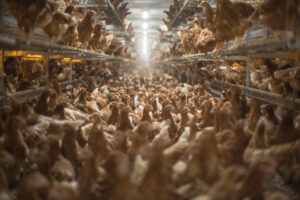Croplands Changed by Climate’s Ups and Downs
New research shows that the complex balance of gains and losses caused by climate change could mean more land being available for agriculture -- but fewer harvests.
By Tim Radford, Climate News NetworkThis piece first appeared at Climate News Network.
LONDON — With climate change, you win some, you lose some. New research shows that suitable new cropland could become available in the high latitudes as the world warms — but tropical regions may become less productive.
Florian Zabel and two fellow-geographers from Ludwig Maximilians University in Munich, Germany, report in the journal Public Library of Science One that they made judgments about the climate, soil and topography to suit the 16 most important food and energy crops. They then compared data for the period 1981-2010 with simulations of a warming world for the period 2071-2100.
The results looked good: in northern Canada, China and Russia, they found that a notional additional land area of 5.6 million sq km became available for crops.
Significant losses
Less happily, in the Mediterranean and sub-Saharan Africa there were significant losses of agricultural productivity — if no additional irrigation was factored in. Also, the chances of multiple harvests in tropical Brazil, Asia and Central Africa would be reduced.
Altogether, the land suitable for agriculture by 2100 would total 54 million sq km. But of this, 91% is already under cultivation.
“Much of the additional area is, however, at best only moderately suited to agricultural use, so the proportion of highly fertile land suited to agricultural use will decrease,” Dr Zabel says.
“In the context of current projections, which predict that the demand for food will double by the year 2050 as the result of population increase, our results are quite alarming.”
The Munich calculations were essentially mathematical projections based on climate models that are, in turn, based on broad conclusions of change. But what if those broad conclusions are too sweeping?
Climate researcher Peter Greve, of the Swiss Federal Institute of Technology (ETH) in Zurich, and colleagues report in Nature Geoscience that the rule of thumb for climate change — that wet regions will tend to get wetter, and already dry regions will in general become more arid — may not always hold.
So they looked at the calculations again, and began to search for trends towards increasing humidity or aridity.
In effect, they were trying to see if they could predict what should have happened in the past, so they chose two periods — 1948 to 1968, and 1984 to 2004 — and examined the patterns of change.
Clear trends
They could find no obvious trend towards either a wetter or a drier climate over about three-quarters of the land area under consideration. There were clear trends for the remaining quarter, but, once again, the answers were not simple. In about half of this land area, the dry-gets-drier, wet-gets-wetter rule seemed to hold. In the other half, the trends seemed to be contradictory.
In the past, parts of the Amazon, Central America, tropical Africa and Asia should have got wetter, but instead became less moist. Patagonia, central Australia and the US Midwest were all dry areas that became wetter.
The wet-gets-wetter rule held good for the eastern US, northern Australia and northern Eurasia, and the already dry Sahel, Arabian Peninsula and parts of central Asia and Australia became more parched.
The lesson is not that climate projections are wrong, but that climate systems are very complex. “Our results emphasise how we should not overly rely on simplifying principles to assess past developments in dryness and humidity,” Greve says.
Your support is crucial…With an uncertain future and a new administration casting doubt on press freedoms, the danger is clear: The truth is at risk.
Now is the time to give. Your tax-deductible support allows us to dig deeper, delivering fearless investigative reporting and analysis that exposes what’s really happening — without compromise.
Stand with our courageous journalists. Donate today to protect a free press, uphold democracy and unearth untold stories.









You need to be a supporter to comment.
There are currently no responses to this article.
Be the first to respond.